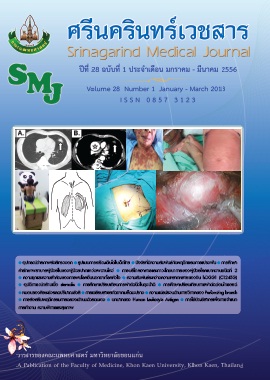The Effects of Transcranial Direct Current Stimulation in Patients with Neuropathic Pain from Spinal Cord Diseases: a Pilot Study
Keywords:
trancranil direct current stimulation, electroencephalogram, EEG spectral analysis, spinal cord disease, neuropathic painAbstract
Background and objectives: Neuropathic pain is a suffering symptom which still does not have proper treatment and also unclearly known about its pathophysiology. One of the hypotheses is the occurring of cortical reorganization resulting in decreasing of pain modulatory system modulated by thalamus and decreasing of peak frequency of alpha activity measured by electroencephalogram (EEG) spectral analysis. There were a few studies showing the effect of transcranial direct current stimulation (tDCS) in relieving neuropathic pain in patients with spinal cord diseases. Moreover, these studies were not involved in the mechanism of action in neuropathic pain relieving. Therefore, we aimed to study the effects of a single stimulation of anodal tDCS over the left primary motor cortex (M1) on neuropathic pain relieving and the alteration of peak frequency of power spectrum density (PSD) under the left M1.
Methods: Ten patients with neuropathic pain from spinal cord diseases were treated by a single stimulation of tDCS 2 mA for 20 minutes. Pain score and peak frequency of EEG spectral analysis were compared between before and after tDCS.
Results: Immediately post-treatment, mean difference of pain score was 1.00 (95%CI 0.24 to 1.75, p=0.01) while theta-alpha frequency (TAF) under the left M1 was 0.99 (95% CI -2.83 to 0.84, p = 0.84). In addition, we found a significant linear regression between the difference of pain score and TAF (r= 0.73, p = 0.03)
Conclusion: Our study suggests that a single stimulation of anodal tDCS over the left M1 may be a useful clinical tool in neuropathic pain from spinal cord diseases. We found the tendency of correlation between the pain score decreased and the peak frequency increased in the TAF, therefore we proposed that increased cortical excitability and modulated pain perception through corticothalamic loop may underlie these effects. However, further study by measuring biochemical changes in the neuropathic pain patients with complete spinal cord injury is suggested.
Keywords: trancranil direct current stimulation, electroencephalogram, EEG spectral analysis, spinal cord disease, neuropathic pain




